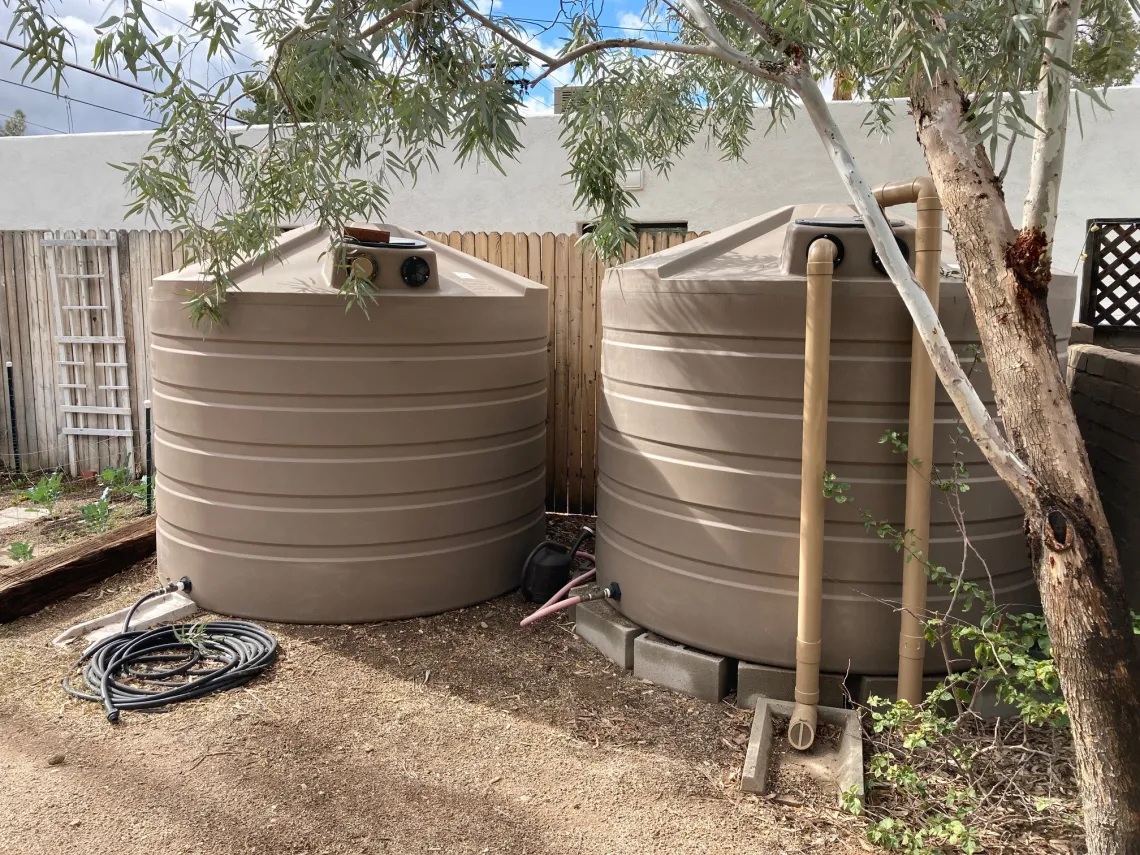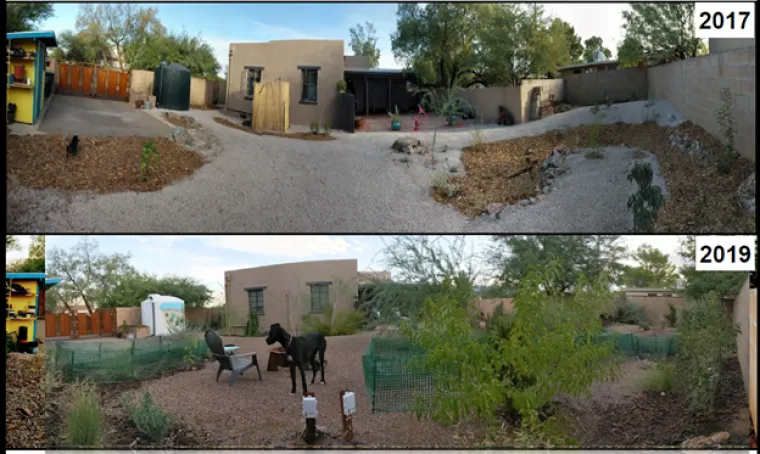WEST Center hosts water harvesting/soil health study

In a new project, funded by a University of Arizona Accelerate for Success Grant, researchers from the School of Natural Resources and the Environment and the College of Public Health will run a mesocosm experiment at WEST, tracing the transport of pathogens in soils that have been subjected to various water sources.
With water harvesting techniques common throughout the City of Tucson and their use continuing to grow, it becomes more important to understand how non-native microorganisms introduced through these applications may impact the soil microbiome. As stated by study investigators:
"Common water harvesting techniques include rain gardens that have altered topography -- directing water to basins that are designed to hold water increasing infiltration into the soil (passive water harvesting). More active water harvesting techniques include collecting stormwater runoff from rooftops and storing it in water tanks for irrigating local landscapes. There are also a number of greywater sources, such as laundry, kitchen sink or bath water, that are redirected to the landscape instead of going down the drain and into the city sewage. Recent studies have shown that these water harvesting sources have potential pathogens that may pose harm to humans so it is advised that individuals that collect it to avoid drinking and to clean their fruit and veggies well before consumption, but little is known about how these introduced microorganisms may impact the soil microbiome." (emphasis added)
To address this gap in understanding, investigators will run a series of experiments to determine if water harvesting techniques disrupt the soil microbiome and result in a disproportionately higher composition of pathogens, predatory prokaryotes, or disease-causing microorganisms. In the study, investigators will collect 1) natural desert soils, 2) local urban soils, and 3) green infrastructure-managed soils from three commonly used water harvesting sources (passive-roadside runoff, active-rooftop/raintank irrigated, and greywater-laundry discharge). Three distinct sources of water (potable, reclaimed, and wastewater) will be added to all soil samples in a controlled environment, and molecular assays will be used to assess the microbial composition before and after an incubation period. Samples will also be spiked with a known quantity of a common pathogen to assess establishment and transport.

Photo: Study site at green infrastructure installation in 2017 and again 2 years later. This site has four treatments - control unaltered urban soil, passive basin receiving primarily stormwater runoff, an active basin receiving rooftop runoff that is stored in the raintank on the left, and a greywater basin that receives laundry discharge.
Credit: Laura Meredith
The study hopes to answer questions such as:
- If potable water is added to soils, does it reduce the likelihood of pathogens to establish? For example, will intermittent flushing of graywater-irrigated soil with potable water help the native microbiome outcompete introduced microorganisms? What happens if a source with a higher pathogen load is added?
- Are the soil microbiomes of natural healthy soils more resilient than urban/degraded soils with lower microbial diversity? In other words, are some soil microbiomes able to outcompete nonnative microorganisms and possible waterborne pathogens?
The research project will be conducted in the WEST Center during Spring 2021. It is led by School of Natural Resources and the Environment’s Dr. Laura Meredith (PI) and School of Public Health’s Dr. Marc Verhougstraete (Co-PI), with lead personnel Vanessa Buzzard from the Meredith Lab.
For more information about this project, contact Vanessa Buzzard at vbuzzard@arizona.edu.

